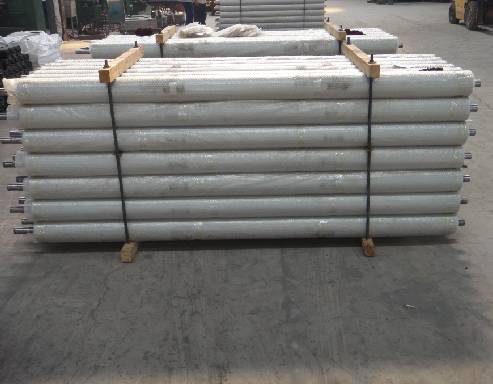 Afrikaans
Afrikaans  Albanian
Albanian  Amharic
Amharic  Arabic
Arabic  Armenian
Armenian  Azerbaijani
Azerbaijani  Basque
Basque  Belarusian
Belarusian  Bengali
Bengali  Bosnian
Bosnian  Bulgarian
Bulgarian  Catalan
Catalan  Cebuano
Cebuano  Corsican
Corsican  Croatian
Croatian  Czech
Czech  Danish
Danish  Dutch
Dutch  English
English  Esperanto
Esperanto  Estonian
Estonian  Finnish
Finnish  French
French  Frisian
Frisian  Galician
Galician  Georgian
Georgian  German
German  Greek
Greek  Gujarati
Gujarati  Haitian Creole
Haitian Creole  hausa
hausa  hawaiian
hawaiian  Hebrew
Hebrew  Hindi
Hindi  Miao
Miao  Hungarian
Hungarian  Icelandic
Icelandic  igbo
igbo  Indonesian
Indonesian  irish
irish  Italian
Italian  Japanese
Japanese  Javanese
Javanese  Kannada
Kannada  kazakh
kazakh  Khmer
Khmer  Rwandese
Rwandese  Korean
Korean  Kurdish
Kurdish  Kyrgyz
Kyrgyz  Lao
Lao  Latin
Latin  Latvian
Latvian  Lithuanian
Lithuanian  Luxembourgish
Luxembourgish  Macedonian
Macedonian  Malgashi
Malgashi  Malay
Malay  Malayalam
Malayalam  Maltese
Maltese  Maori
Maori  Marathi
Marathi  Mongolian
Mongolian  Myanmar
Myanmar  Nepali
Nepali  Norwegian
Norwegian  Norwegian
Norwegian  Occitan
Occitan  Pashto
Pashto  Persian
Persian  Polish
Polish  Portuguese
Portuguese  Punjabi
Punjabi  Romanian
Romanian  Russian
Russian  Samoan
Samoan  Scottish Gaelic
Scottish Gaelic  Serbian
Serbian  Sesotho
Sesotho  Shona
Shona  Sindhi
Sindhi  Sinhala
Sinhala  Slovak
Slovak  Slovenian
Slovenian  Somali
Somali  Spanish
Spanish  Sundanese
Sundanese  Swahili
Swahili  Swedish
Swedish  Tagalog
Tagalog  Tajik
Tajik  Tamil
Tamil  Tatar
Tatar  Telugu
Telugu  Thai
Thai  Turkish
Turkish  Turkmen
Turkmen  Ukrainian
Ukrainian  Urdu
Urdu  Uighur
Uighur  Uzbek
Uzbek  Vietnamese
Vietnamese  Welsh
Welsh  Bantu
Bantu  Yiddish
Yiddish  Yoruba
Yoruba  Zulu
Zulu Durable Steel Housing Solutions for Enhanced Bearing Performance and Reliability
Understanding Steel Bearing Housings A Key Component in Machinery
Steel bearing housings play a crucial role in the machinery and manufacturing sectors, serving as protective casings for bearings that allow for smooth rotational movement. These housings are designed to provide structural support for the bearings while ensuring efficient operation under various loads and conditions. In this article, we will explore the significance, design considerations, and applications of steel bearing housings.
Importance of Steel Bearing Housings
Bearing housings are essential because they ensure that the bearings remain in place and function efficiently. They help in sealing the bearings from contaminants such as dust, dirt, and moisture, which can significantly reduce the lifespan of the bearings if they are allowed to interfere with the internal components. Additionally, steel, being a durable and robust material, can withstand high levels of stress and temperature, making it ideal for heavy-duty applications.
The choice of steel for bearing housings is not merely coincidental. Steel is known for its excellent tensile strength, corrosion resistance, and long-term durability. This makes it suitable for various industrial environments, which often expose components to harsh conditions. Furthermore, steel bearing housings can be treated or coated to enhance their corrosion resistance, providing an extra layer of protection.
Design Considerations
When designing a steel bearing housing, several factors must be taken into account to ensure optimal performance. These include
1. Load Capacity The design must account for the loads that the housing will bear during operation. Proper calculations must be performed to ensure that the housing can support both static and dynamic loads.
2. Alignment Bearings require precise alignment to function smoothly. The housing's design should facilitate proper alignment of the shaft and bearing to minimize wear and tear.
steel bearing housing

3. Sealing Effective sealing mechanisms must be incorporated to keep contaminants out and retain lubrication within the bearing. This often includes the use of rubber seals or labyrinth seals, which provide a barrier against external elements.
4. Cooling In high-speed applications, heat generation can be a concern. The design should allow for adequate cooling mechanisms, whether through air ventilation or external cooling systems, to dissipate heat effectively.
5. Maintenance Access Easy access for maintenance and inspection is crucial. A well-designed housing should allow for quick bearing replacement or servicing without the need for extensive disassembly of surrounding components.
Applications
Steel bearing housings find applications in numerous sectors, including automotive, aerospace, manufacturing, and heavy machinery. In automotive applications, they are commonly used in wheel hubs and transmission systems, ensuring that the wheels rotate smoothly and efficiently. In manufacturing, they are found in conveyor systems, pumps, and motors, where reliable bearing support is critical for continuous operations.
Moreover, their versatility allows for use in specialized machinery such as CNC machines and robotics, where precision and reliability are paramount. The ability to withstand extreme environments makes steel bearing housings suitable for applications in marine, mining, and even agricultural sectors.
Conclusion
In summary, steel bearing housings are vital components that ensure the efficient and reliable operation of various machines. Their robust design and protective features contribute significantly to the longevity and performance of bearings across multiple industries. Understanding the intricacies involved in their design and functionality can lead to better machinery performance and reduced operational costs in the long term. As technology advances, the future of steel bearing housings may also evolve, incorporating innovations that improve their efficiency and effectiveness even further.
-
Revolutionizing Conveyor Reliability with Advanced Rubber Lagging PulleysNewsJul.22,2025
-
Powering Precision and Durability with Expert Manufacturers of Conveyor ComponentsNewsJul.22,2025
-
Optimizing Conveyor Systems with Advanced Conveyor AccessoriesNewsJul.22,2025
-
Maximize Conveyor Efficiency with Quality Conveyor Idler PulleysNewsJul.22,2025
-
Future-Proof Your Conveyor System with High-Performance Polyurethane RollerNewsJul.22,2025
-
Driving Efficiency Forward with Quality Idlers and RollersNewsJul.22,2025





























